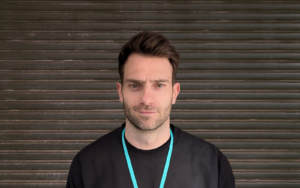Navigating The Workforce Planning Process: 5 Key Steps

The most important part of any business is its people. Ensuring that a company has the right talent for their organisation is vital for the business’s success. Frequently, businesses face issues in talent management, such as skills shortages, high turnover, or are plagued by hard-to-fill roles. An effective workplace planning process can help businesses prepare for uncertainties in the market and understand how to manage the supply and demand of their workforce.
Below I explore how navigating the workforce planning process through 5 key steps can positively impact and improve businesses.
What is workforce planning?
Workforce planning, also known as strategic workforce planning, is a business strategy that assesses your business’s current and future needs, anticipating the challenges that your workforce might face and how you can adapt to mitigate these issues.
Whilst some may not consider this a vital strategy, in the past few years, many businesses have experienced acute skills shortages, limiting company growth. Additionally, Brexit and the pandemic have both significantly affected how many companies secure and retain key talent.
Workforce planning can help you understand the needs of your workforce better and empower you to make decisions based on expected and unexpected variables.
To summarise, workforce planning allows you to strike the perfect balance, ensuring you have the right people, for the right roles, at the right time.
What is the workforce planning process?
The workforce planning process creates a framework for you to ensure your talent is being sourced, retained, and managed in a cost-effective and measured way. It is a continuous 5 step process which works to align new business goals and objectives with the practicalities of how your workforce is managed.
This process is often undertaken either by your internal talent or HR team, often with the help of a specialist external provider. The beauty of going through the workforce planning process is that it marries together the HR/ talent and leadership teams, as they work together to fulfill the business’s goals and vision.
Through the workforce planning process, data on your current workforce is collected and analysed and actions recommended, agreed upon, and implemented with success criterias measured up against your business’s vision and key goals. This process works to manage both expected and unexpected challenges that your business might face. This often means the process is continually repeated to help you prepare for new circumstances as your business further develops.
The 5 step workforce planning process
Step 1: Understanding the business’s strategic direction
Firstly, it’s crucial to have a consultation period between leadership, the internal talent team, and any external providers you use, to understand the strategic direction for your company. These can include questions on where you expect growth and any predicted changes to organisational structure, such as a new branch or department. This can help later with scenario planning and predicting potential risks to the business.
Step 2: Analysis of the current workforce
During this stage, you will need to gather data on your workforce. This step is important to identify gaps or areas of improvement that will need to be addressed in the future.
When looking at the supply and demand of a workforce, data concerning the following will be valuable:
- Employee turnover
- Hard to fill roles
- Workloads of different departments
- Current skills gaps
- Career and reskilling opportunities for current employees
Additionally, you may also look at potential challenges to your workforce regarding location, demographics, or reliance on contract vs permanent workers and how that might affect your growth. This can all help to identify current and potential gaps in your business.
Step 3: Research workforce trends
Mapping out and concocting various scenarios is a necessary part of the workforce planning process. This might include assessing how your recruitment and retention could be affected by external factors, such as changes to the economy and workforce trends. You are not trying to predict the future, but it is a way of understanding what challenges you could face and what an effective response could be. This can be a useful method for risk management and make your organisation more prepared for the unexpected.
Step 4: Develop an action plan
A good workforce planning process will include formulating an effective action plan with the different solutions recommended following data analysis and scenario planning. There may be a range of strategies you want to consider, depending on how your business is structured. This might include plans for recruitment, team restructuring or training, use of contingent workers, and succession planning.
Once the action plan is developed, more conversations need to take place with stakeholders and leadership to check that any solution fits with the overall business vision and that all parties are on board with the recommended actions.
Step 5: Solution, implementation and monitoring
Once actions have been agreed, roles have been understood and all procedures have been put in place to support any changes, this is when the action plan can be executed.
However, this is not where the process stops. There needs to be continuous monitoring, with outcomes checked against success criteria. As your business grows, more planning will need to take place to prepare for new challenges.
The goalposts of an effective workforce planning process
Once your organisation has moved into the final monitoring stage, there are key criterias that you can mark your progress by. These are general points, and with the help of a recruitment agency or other supplier managing this process, you will have your own tailored goalposts for what success means for your business.
For most companies, the successful outcome of an effective workforce plan will include certain questions about “rights” within your business, such as:
- The right size – are your teams over/ understaffed? Are workers leaving your company due to high workloads or because they’re not being challenged?
- The right skills – is your company able to meet targeted goals and projects?
- The right shape – does the company structure work for your business? Is the ratio of managers to team leads and professionals right for you?
- The right cost – is recruitment and talent planning costing too much? Too high costs can bankrupt a business, but too low costs could mean you are not effectively recruiting the right professionals
- The right location – could relocation help manage costs/ improve client/customer experience?
Most businesses will find that they are struggling in at least one of these areas, following the workforce planning process. Continuously re-assessing its effectiveness will help your organisation work towards improving every element.
If you need assistance managing your workforce planning process or want to explore the services we provide, get in touch with our team here.
Similar articles you might like...

Tips For Attracting AND Retaining Women In The Workplace
Retaining women in the workplace has significant benefits for organisations, from improved hiring decisions to lower employee turnover.

The Wider Impact Of AI In Talent Acquisition Teams
Talent acquisition specialist Simon Needle shares his thoughts on how processes could change in the industry for the better and worse as AI in talent acquisition becomes more prominent.
Latest jobs
Hardware Engineer
 Stone, United Kingdom
Stone, United Kingdom
 Market Related
Market Related
Hardware Engineer Location: Stone, Staffordshire(On-site – 5 days per week) Salary: Market Related Type: Full-time, PermanentVIQU has partnered with a leading organisation in the nuclear sector to recruit a Hardware Engineer. This is a fantastic opportunity...
Desktop Support Engineer
 London, United Kingdom
London, United Kingdom
 £150 - 200 per day
£150 - 200 per day
Desktop Support Engineer – 3-month Contract – LondonMy client is looking for a Desktop Support Engineer to provide IT support for a 3-month contract. This opportunity will involve service desk issues which will be handled...
Lead Front-End Developer
 Southampton, United Kingdom
Southampton, United Kingdom
 Market related
Market related
Lead Front-End DeveloperSouthampton – HybridCompetitive SalaryVIQU have partnered with a leading financial organisation that is investing heavily in the development of a new, modern software capability. As part of this transformation, they are looking to...
Data Engineering Manager
 Leeds, United Kingdom
Leeds, United Kingdom
 £65k - 75k per year
£65k - 75k per year
Data Engineering Manager Location: Leeds (Mostly Remote – 1 Day On-Site)Salary: Up to £75,000 per annumAre you an experienced Senior Data Engineer ready to step into a leadership role? We’re looking for a Lead Data Engineer to join...
Cyber Security Team Lead
 Cardiff, United Kingdom
Cardiff, United Kingdom
 £240 - 245 per day
£240 - 245 per day
Cyber Security Team Lead – Hybrid – Cardiff – ContractVIQU have partnered with a public-sector client based in Cardiff, who are seeking a Cyber Security Team Lead to support a small cyber security team on...


